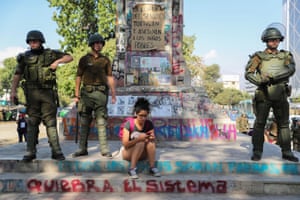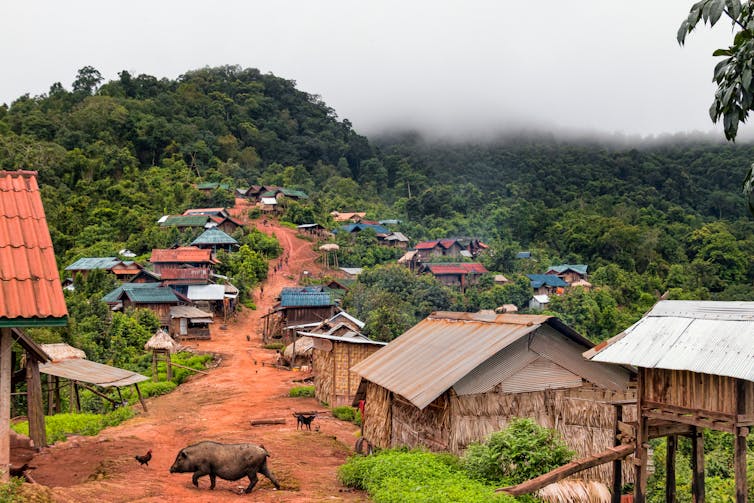School is mostly made up of students from Stoney Nakoda First Nation Exshaw School is a kindergarten to Grade 8 school located in the hamlet of Exshaw, west of Calgary. Of the approximately 200 students who attend Exshaw School, only two are not Indigenous.
A school with a student population that is 99 per cent Indigenous may be forced to close its doors due to a budget shortfall, school officials said Sunday.
Exshaw School is a kindergarten to Grade 8 school located in the hamlet of Exshaw, west of Calgary. Of the approximately 200 students who attend Exshaw School, only two are not Indigenous.
The school has been funded by federal dollars since 1973. Under the current agreement, the Canadian Rockies Public Schools authority educates Stoney Nakota First Nation children outside of that community based on requests from parents.
Michelle Wesley said she decided to move her girls to Exshaw School after they had faced bullying at a previous school.
"The Exshaw staff and teachers have been absolutely wonderful and supportive and helped my girls catch up to their grade level criteria and there has been no complaints from my girls about any type of bullying," Wesley said in an email. "If I have any concerns the teachers and staff make sure it's dealt [with] as soon as possible."
But in late August, CRPS received word from the federal government the agreement would be terminated and a new agreement would need to be negotiated with the Stoney Education Authority and the government.
$1.6M shortfall
"All of this is fine, but in the interim we received an email of possible funding levels that we would receive," said Christopher MacPhee, superintendent with Canadian Rockies Public Schools. "And it was significantly different from the total operation of a school facility, as opposed to just funding per student."
According to MacPhee, calculating numbers based on students from last year left an approximately $1.6-million shortfall in the school's upcoming budget.
That cut funding would mean closing or re-purposing the school, MacPhee said.
"Either way, that means that we would not be able to provide services for our federally-funded students who are with us, which we would loathe to do," he said. "The results we're getting with those students has been fantastic to date."
Exshaw School is currently seeing attendance rates around 86 per cent, MacPhee said.
"That's very high. And I've worked in a number of Indigenous schools across this country," he said. "I think the rates are high due to the resources we are able to put into place that the federal government has granted in the agreement that was in place for some amount of years."
One-year extension
According to MacPhee, communication with the federal government has been difficult — but after months of trying to secure a meeting, the school division was offered a one-year extension to keep the school open.
"Just recently, we've got a communication that they have permission to extend the agreement for one more year. While on the face of it it sounds wonderful, but it absolutely isn't," he said. "I have a large number of staff who are, for lack of better words, in turmoil at this point because they're wondering if they're going to have a career."
MacPhee said the school division told Indigenous Services the offer was "not optimal" due to the added pressure and stress it would cause on the system.
"We said, it's November, and we haven't even had a sit down at a table to negotiate. But you gave us the letter at the end of August," he said. "Why, with six months left in the school year, are we not sitting down, in January, and getting to an agreement that best supports these children and utilize the funding levels that they've done in other parts of the province?"
In a statement provided to CBC the day after this article was published, a spokesperson for Indigenous Services Canada said the $1.6-million shortfall was inaccurate, and that the only change at this point is in administration.
The spokesperson said through the transition, the department has worked in partnership with CRSD and the Stoney Education Authority to obtain clarity on the true costs of education services and support at Exshaw School.
"Indigenous Services Canada continues to work in partnership with the Stoney First Nation Education Authority and the School District to ensure the best possible outcomes for these students," the statement reads.
MacPhee said the department was "playing with words."
"They are correct. There is no funding shortfall now, but the future funding numbers they gave us would result in a funding shortfall of approximately $1.6 million," MacPhee wrote in an email.
MacPhee said CRPS has provided three potential dates for meetings with the federal government.
"For me, it's disappointing that the [government], which made Truth and Reconciliation a mandate … that their actions are not matching their words, especially when it comes to a situation like this," MacPhee said. "If you're going to talk the talk, then walk it."
Concern from parents
While Exshaw School's future remains uncertain, some parents say those being most affected are the kids — who Isabella Goodstoney, a parent and educational assistant, said "are not being heard."
"I feel like that these kids need to have a voice. This is their future," she said.
Upon hearing Exshaw's future was uncertain, Goodstoney wrote a letter regarding her concern for her daughter's future.
"That's why I chose to transfer my child to Exshaw School from Nakota Elementary School as I know the experience and educational value Exshaw School provides," the letter reads. "I know this as a fact because I've attended both schools as a child myself, and have had the opportunity to work at both schools as an adult.
"What will happen if we take this away from them? Are we setting them up for failure? I want my child to grow, learning that her education is the key to success."
---30---
---30---















